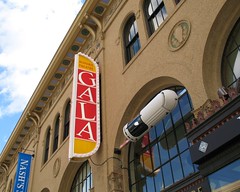
Paul Ruther (Phillips Collection), Gail Murdock (DCAHEC Board member) and Michael Bobbitt (Adventure Theatre) at the DC Arts and Humanities Education Collaborative gala. Photo by the author.
Last week, the Huffington Post ran an opinion piece by Michael Kaiser—President of the Kennedy Center for the Performing Arts— lamenting Millennials’ low “culture IQ.” “We now have an entire generation of young people who have had virtually no exposure to the arts,” Kaiser declared, citing anecdotal examples of young colleagues clueless of Caruso’s tenor or Giuseppe Verdi’s place in history. He warned that unless we bolster arts education (and make the arts more affordable to young people), arts organizations will flounder in a few years’ time as their donors, board members, volunteers and patrons age without anyone to replace them.
Unsurprisingly (and as noted on Friday by our arts editor Jenn Larsen), Kaiser has since faced a hailstorm of online criticism, with dozens of self-proclaimed art-loving Millennials labeling him “ageist,” “elitist,” and even delusional. In a frequently-linked post, blogger Liz Maestri accuses Kaiser of “[making] the ridiculous assumption that all young people are stupid, drooling rabble, when in fact young people are more culturally savvy than ever.” Challenging Mr. Kaiser’s “self-defined ‘high art,’” she concludes that “major arts organizations need to go away. They are their own worst enemy.”
In some ways, I agree with her. “Stuffy art”—to steal one of the HuffPo commenters’ jargon—is not the only form of art out there. I cringed when, strolling through Eastern Market a few months ago, my friend pointed out “bad art” at a local artist’s stand. In my mind, there is no bad art, just as there is no “high art.”
But that very mindset is something I learned. Unlike Ms. Maestri (or half of the HuffPo commenters, it seems), my dad is not a musician, nor are my brothers; I never had season tickets to “the BSO” and I haven’t worked for an orchestra. During my junior year in Paris, I sped through the Rodin Museum and dreaded Picasso exhibits. Where is the art in grotesque shapes? I asked myself.
Two years later, I see it now. In fact, I see art everywhere: in the Dupont Circle fountain sculptures, the Gothic architecture of neighborhood churches, and the countless murals speckled across the city. Continue reading →

